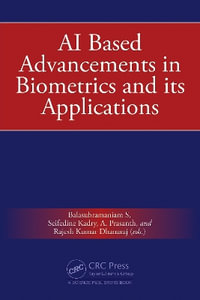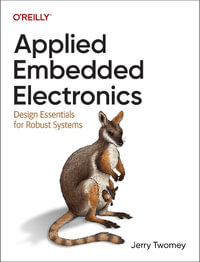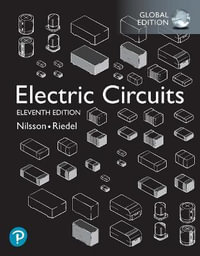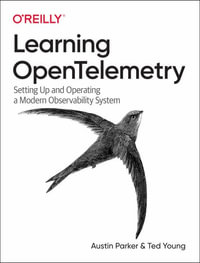
Power System Dynamics and Stability
With Synchrophasor Measurement and Power System Toolbox
By: Peter W. Sauer, M. A. Pai, Joe H. Chow
Hardcover | 22 September 2017 | Edition Number 2
At a Glance
376 Pages
Revised
25.0 x 17.6 x 2.3
Hardcover
RRP $224.35
$185.35
17%OFF
or 4 interest-free payments of $46.34 with
orAims to ship in 7 to 10 business days
Classic power system dynamics text now with phasor measurement and simulation toolbox
This new edition addresses the needs of dynamic modeling and simulation relevant to power system planning, design, and operation, including a systematic derivation of synchronous machine dynamic models together with speed and voltage control subsystems. Reduced-order modeling based on integral manifolds is used as a firm basis for understanding the derivations and limitations of lower-order dynamic models. Following these developments, multi-machine model interconnected through the transmission network is formulated and simulated using numerical simulation methods. Energy function methods are discussed for direct evaluation of stability. Small-signal analysis is used for determining the electromechanical modes and mode-shapes, and for power system stabilizer design.
Time-synchronized high-sampling-rate phasor measurement units (PMUs) to monitor power system disturbances have been implemented throughout North America and many other countries. In this second edition, new chapters on synchrophasor measurement and using the Power System Toolbox for dynamic simulation have been added. These new materials will reinforce power system dynamic aspects treated more analytically in the earlier chapters.
Key features:
- Systematic derivation of synchronous machine dynamic models and simplification.
- Energy function methods with an emphasis on the potential energy boundary surface and the controlling unstable equilibrium point approaches.
- Phasor computation and synchrophasor data applications.
- Book companion website for instructors featuring solutions and PowerPoint files. Website for students featuring MATLABTM files.
Power System Dynamics and Stability, 2nd Edition, with Synchrophasor Measurement and Power System Toolbox combines theoretical as well as practical information for use as a text for formal instruction or for reference by working engineers.
Preface xiii
About the Companion Website xv
1 Introduction 1
1.1 Background 1
1.2 Physical Structures 2
1.3 Time-Scale Structures 3
1.4 Political Structures 4
1.5 The Phenomena of Interest 5
1.6 New Chapters Added to this Edition 5
2 Electromagnetic Transients 7
2.1 The Fastest Transients 7
2.2 Transmission Line Models 7
2.3 Solution Methods 12
2.4 Problems 17
3 Synchronous Machine Modeling 19
3.1 Conventions and Notation 19
3.2 Three-Damper-Winding Model 20
3.3 Transformations and Scaling 21
3.4 The Linear Magnetic Circuit 29
3.5 The Nonlinear Magnetic Circuit 35
3.6 Single-Machine Steady State 40
3.7 Operational Impedances and Test Data 44
3.8 Problems 49
4 Synchronous Machine Control Models 53
4.1 Voltage and Speed Control Overview 53
4.2 Exciter Models 53
4.3 Voltage Regulator Models 58
4.4 Turbine Models 62
4.4.1 Hydroturbines 62
4.4.2 Steam Turbines 64
4.5 Speed Governor Models 67
4.6 Problems 70
5 Single-Machine Dynamic Models 71
5.1 Terminal Constraints 71
5.2 The Multi-Time-Scale Model 74
5.3 Elimination of Stator/Network Transients 76
5.4 The Two-Axis Model 81
5.5 The One-Axis (Flux-Decay) Model 83
5.6 The Classical Model 84
5.7 Damping Torques 86
5.8 Single-Machine Infinite-Bus System 90
5.9 Synchronous Machine Saturation 94
5.10 Problems 100
6 Multimachine Dynamic Models 101
6.1 The Synchronously Rotating Reference Frame 101
6.2 Network and R-L Load Constraints 103
6.3 Elimination of Stator/Network Transients 105
6.3.1 Generalization of Network and Load Dynamic Models 110
6.3.2 The Special Case of “Impedance Loads” 112
6.4 Multimachine Two-Axis Model 113
6.4.1 The Special Case of “Impedance Loads” 115
6.5 Multimachine Flux–Decay Model 116
6.5.1 The Special Case of “Impedance Loads” 117
6.6 Multimachine Classical Model 118
6.6.1 The Special Case of “Impedance Loads” 119
6.7 Multimachine Damping Torques 120
6.8 Multimachine Models with Saturation 121
6.8.1 The Multimachine Two-Axis Model with Synchronous Machine Saturation 123
6.8.2 The Multimachine Flux-Decay Model with Synchronous Machine Saturation 124
6.9 Frequency During Transients 126
6.10 Angle References and an Infinite Bus 127
6.11 Automatic Generation Control (AGC) 129
7 Multimachine Simulation 135
7.1 Differential-Algebraic Model 135
7.1.1 Generator Buses 136
7.1.2 Load Buses 137
7.2 Stator Algebraic Equations 138
7.2.1 Polar Form 138
7.2.2 Rectangular Form 138
7.2.3 Alternate Form of Stator Algebraic Equations 139
7.3 Network Equations 140
7.3.1 Power-Balance Form 140
7.3.2 Real Power Equations 141
7.3.3 Reactive Power Equations 141
7.3.4 Current-Balance Form 142
7.4 Industry Model 149
7.5 Simplification of the Two-Axis Model 153
7.5.1 Simplification #1 (Neglecting Transient Saliency in the Synchronous Machine) 153
7.5.2 Simplification #2 (Constant Impedance Load in the Transmission System) 154
7.6 Initial Conditions (Full Model) 158
7.6.1 Load-Flow Formulation 158
7.6.2 Standard Load Flow 159
7.6.3 Initial Conditions for Dynamic Analysis 160
7.6.4 Angle Reference, Infinite Bus, and COI Reference 165
7.7 Numerical Solution: Power-Balance Form 165
7.7.1 SI Method 165
7.7.2 Review of Newton’s Method 165
7.7.3 Numerical Solution Using SI Method 166
7.7.4 Disturbance Simulation 167
7.7.5 PE Method 168
7.8 Numerical Solution: Current-Balance Form 168
7.8.1 Some Practical Details 170
7.8.2 Prediction 171
7.9 Reduced-Order Multimachine Models 171
7.9.1 Flux-Decay Model 171
7.9.2 Generator Equations 172
7.9.3 Stator Equations 172
7.9.4 Network Equations 172
7.9.5 Initial Conditions 172
7.9.6 Structure-Preserving Classical Model 173
7.9.7 Internal-Node Model 177
7.10 Initial Conditions 179
7.11 Conclusion 180
7.12 Problems 180
8 Small-Signal Stability 183
8.1 Background 183
8.2 Basic Linearization Technique 184
8.2.1 Linearization of Model A 185
8.2.2 Differential Equations 185
8.2.3 Stator Algebraic Equations 186
8.2.4 Network Equations 186
8.2.5 Linearization of Model B 193
8.2.6 Differential Equations 194
8.2.7 Stator Algebraic Equations 194
8.2.8 Network Equations 194
8.3 Participation Factors 194
8.4 Studies on Parametric Effects 198
8.4.1 Effect of Loading 198
8.4.2 Effect of KA 200
8.4.3 Effect of Type of Load 201
8.4.4 Hopf Bifurcation 203
8.5 Electromechanical Oscillatory Modes 205
8.5.1 Eigenvalues of A and A? 207
8.6 Power System Stabilizers 209
8.6.1 Basic Approach 209
8.6.2 Derivation of K1 − K6 Constants 209
8.6.3 Linearization 211
8.6.4 Synchronizing and Damping Torques 215
8.6.5 Damping of Electromechanical Modes 215
8.6.6 Torque-Angle Loop 219
8.6.7 Synchronizing Torque 221
8.6.8 Damping Torque 221
8.6.9 Power System Stabilizer Design 221
8.6.10 Frequency-Domain Approach 222
8.6.11 Design Procedure Using the Frequency-Domain Method 223
8.7 Conclusion 227
8.8 Problems 227
9 Energy Function Methods 233
9.1 Background 233
9.2 Physical and Mathematical Aspects of the Problem 233
9.3 Lyapunov’s Method 236
9.4 Modeling Issues 237
9.5 Energy Function Formulation 238
9.6 Potential Energy Boundary Surface (PEBS) 241
9.6.1 Single-Machine Infinite-Bus System 241
9.6.2 Energy Function for a Single-Machine Infinite-Bus System 244
9.6.3 Equal-Area Criterion and the Energy Function 247
9.6.4 Multimachine PEBS 249
9.6.5 Initialization of VPE(?) and its Use in PEBS Method 252
9.7 The Boundary Controlling u.e.p (BCU) Method 254
9.7.1 Algorithm 256
9.8 Structure-Preserving Energy Functions 259
9.9 Conclusion 260
9.10 Problems 260
10 Synchronized PhasorMeasurement 263
10.1 Background 263
10.2 Phasor Computation 264
10.2.1 Nominal Frequency Phasors 264
10.2.2 Off-Nominal Frequency Phasors 265
10.2.3 Post Processing 269
10.2.4 Positive-Sequence Signals 271
10.2.5 Frequency Estimation 272
10.2.6 Phasor Data Accuracy 274
10.2.7 PMU Simulator 275
10.3 Phasor Data Communication 276
10.4 Power System Frequency Response 277
10.5 Power System Disturbance Propagation 280
10.5.1 Disturbance Triggering 285
10.6 Power System Disturbance Signatures 285
10.6.1 Generator or Load Trip 286
10.6.2 Oscillations 287
10.6.3 Fault and Line Switching 288
10.6.4 Shunt Capacitor or Reactor Switching 289
10.6.5 Voltage Collapse 289
10.7 Phasor State Estimation 289
10.8 Modal Analyses of Oscillations 293
10.9 Energy Function Analysis 296
10.10 Control Design Using PMU Data 299
10.11 Conclusions and Remarks 301
10.12 Problems 302
11 Power SystemToolbox 305
11.1 Background 305
11.2 Power Flow Computation 306
11.2.1 Data Requirement 306
11.2.2 Power Flow Formulation and Solution 308
11.2.3 Nonconvergent Power Flow 311
11.3 Dynamic Simulation 311
11.3.1 Dynamic Models and Per-Unit Parameter Values 312
11.3.2 Initialization 313
11.3.3 Network Solution 314
11.3.4 Integration Methods 316
11.3.5 Disturbance Specifications 317
11.4 Linear Analysis 321
11.5 Conclusions and Remarks 324
11.6 Problems 324
A IntegralManifolds for Model Reduction 327
A.1 Manifolds and Integral Manifolds 327
A.2 Integral Manifolds for Linear Systems 328
A.3 Integral Manifolds for Nonlinear Systems 336
Bibliography 341
Index 353
ISBN: 9781119355779
ISBN-10: 111935577X
Series: IEEE Press
Published: 22nd September 2017
Format: Hardcover
Language: English
Number of Pages: 376
Audience: Professional and Scholarly
Publisher: John Wiley & Sons (UK)
Country of Publication: US
Edition Number: 2
Edition Type: Revised
Dimensions (cm): 25.0 x 17.6 x 2.3
Weight (kg): 0.74
Shipping
| Standard Shipping | Express Shipping | |
|---|---|---|
| Metro postcodes: | $9.99 | $14.95 |
| Regional postcodes: | $9.99 | $14.95 |
| Rural postcodes: | $9.99 | $14.95 |
How to return your order
At Booktopia, we offer hassle-free returns in accordance with our returns policy. If you wish to return an item, please get in touch with Booktopia Customer Care.
Additional postage charges may be applicable.
Defective items
If there is a problem with any of the items received for your order then the Booktopia Customer Care team is ready to assist you.
For more info please visit our Help Centre.
You Can Find This Book In
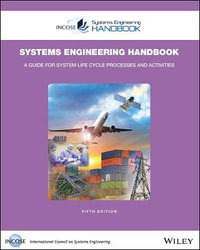
INCOSE Systems Engineering Handbook
5th Edition - A Guide for System Life Cycle Processes and Activities
Paperback
RRP $149.95
$92.50
OFF













